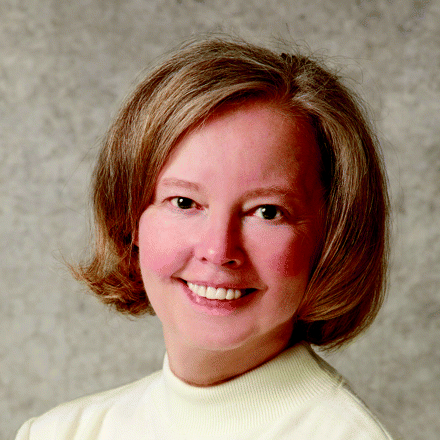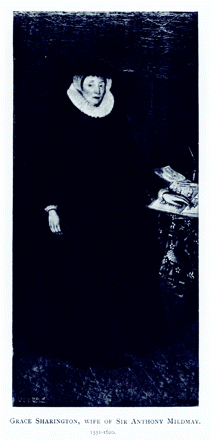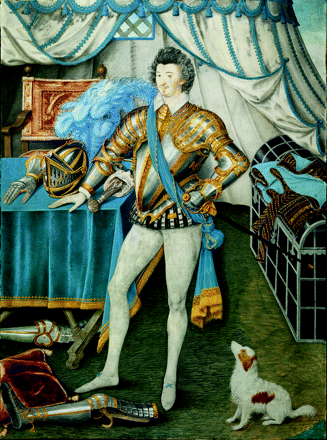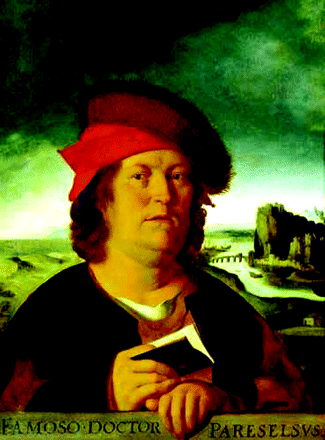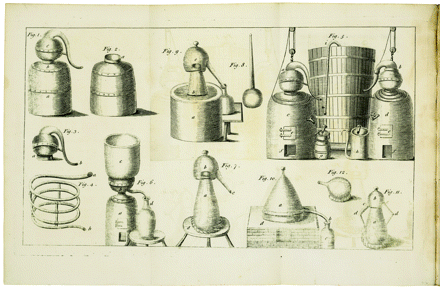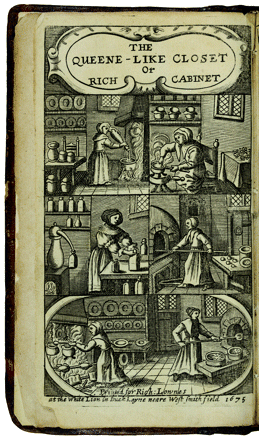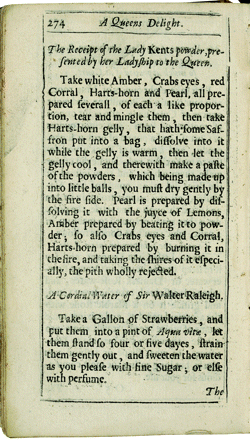Lady Mildmay’s Modern Medical Cures
Instructions for use. Warning labels. Charting patient outcomes. Nutritional supplements. Personalized medicine. Holistic medicine. Universal healthcare. Those are concepts that we automatically associate with modern medical practice. But those same concepts—although innovative and in some cases controversial at the time—were also central to the work of Lady Grace Mildmay, a home-schooled, well-to-do English woman who practiced medicine more than 400 years ago. Using the latest equipment, the finest medicines, and state-of-the-art procedures, she aimed to provide her patients with the best that medical care could offer, and she did so free of charge. If she had been given access to diagnostic test kits, scanning equipment, and organic chemistry methodology, and if she had known about pathogens and the human genome, she undoubtedly would have incorporated those things into her practice as well.
Early Life
Grace Sharington was born in 1552 at Lacock Abbey, the Sharington family estate in Chippenham, Wiltshire, about 190 miles west of London. Her father, Sir Henry Sharington, had been knighted by Queen Elizabeth I and had served as Sheriff of Wiltshire. Following the customs of that time, Grace was tutored at home by a governess, Miss Hamblyn, who was her father’s niece. Miss Hamblyn was a good role model, ensured that Grace had little idle time, and channeled her young charge toward strict standards of behavior that were grounded in Christian values. Upper class women of that era were expected to be deferential, industrious, charitable, and modest (1).
However, women of Grace’s class were not the feebleminded femmes fatales so often depicted in novels set in that period. They were expected to run a well-ordered home, and when their wealthy husbands were away from their estates, the wives assumed management of the family’s business affairs. So, Grace took lessons in penmanship, arithmetic, and how to write correspondence, as well as in needlework, drawing, and music. Miss Hamblyn was also knowledgeable about medicines and surgery, and Grace’s reading list included William Turner’s recently published A Newe Herball, a book that classified herbs and documented their medicinal properties.
At the age of fifteen, Grace married Anthony Mildmay, the eldest son of Sir Walter Mildmay, who had served as Queen Elizabeth’s Chancellor of the Exchequer. Only eighteen years old when they married, Anthony was not ready to settle down and secured a series of diplomatic and military positions to satisfy his wanderlust. For the first twenty years of their marriage, Anthony was away from home about half the time, and Grace lived in the Northamptonshire home of her in-laws. She had a cordial relationship with the elder Mildmays, declined most social invitations, and led a quiet, meditative life.
Anthony’s frequent absences gave Grace the freedom to structure her own daily routine. She set aside time each day to read the Bible, pray, sing and play the lute, embroider, care for the sick, and supervise the household staff. Although Grace avoided plays, feasts, and other Elizabethan amusements, hospitality was customary among the landed gentry, and the Mildmays received many distinguished visitors. In her later years, Grace’s skills as a hostess even impressed King James I, who visited the Mildmay estate in 1603 and 1612. In 1596, Queen Elizabeth knighted Anthony for his services to the crown, and his wife therefore became Lady Grace Mildmay.
Instead of the formal marriage settlement (i.e., land, goods, and money) that was typically arranged between two wealthy families for newlywed couples in those days, Sir Henry Mildmay provided generously for his daughter in his will. In the early years of their marriage, the couple relied on an annual £130 allowance from Anthony’s father as their only source of disposable income. After Anthony’s years of travel and the deaths of both their fathers, Grace and Anthony settled down on the Mildmay family estate in Apethorpe, Northamptonshire, about 90 miles north of London. Their inheritances were contested in a series of complicated court proceedings, but once those were resolved, Anthony enjoyed an annual income of £ 3000 bequeathed from his father, and Grace controlled her own annual income of £1200 bequeathed from her father. Although it was an arranged marriage (typical of the times), Grace and Anthony developed a harmonious relationship that lasted fifty years.
Sixteenth Century Medical Practitioners
Medicine in Elizabethan England consisted of a hierarchy of practitioners: physicians, surgeons, apothecaries, and midwives, each of whom was licensed by a professional society or trade organization. At the top were the physicians, who were university graduates with seven years of medical education. They used various remedies to treat internal ailments, usually based on their knowledge of various theories about the causes of disease. Next were the surgeons, who served a lengthy apprenticeship to learn surgical technique. They concentrated on external procedures, such as setting bones, amputating limbs, lancing abscesses, removing kidney stones, and treating venereal disease. Below them were the apothecaries, who prepared the medicines prescribed by physicians and also sold their concoctions directly to patients. Lastly, there were the midwives, who attended childbirths. However, they only dealt with normal deliveries; if complications necessitated the use of medical instruments, they deferred to a male doctor.
In England’s villages and rural areas, licensed healers were not often readily available. Since medieval times, these far flung regions had relied on the unauthorized medical services of an eclectic mix of clergy, landed gentry, upper class women, and opportunists. The “Quack’s Act” of 1542–1543 finally legitimized their services by permitting those with a knowledge of medicines and surgery to practice without a license. Although they filled an important unmet need, these unlicensed practitioners were often scorned by the medical establishment, especially if they charged fees, which put them in direct financial competition with licensed doctors. They were also criticized for their lack of knowledge about disease etiology, for using panaceas, and for practicing uroscopy (i.e., making a diagnosis by examining urine).
Often as not, these unlicensed practitioners were women. Women could not attend university and therefore could not become licensed physicians. Few received licenses as surgeons or apothecaries. Nevertheless, women usually tended to the medical needs of their families and often of those in their local village or township. Poor women relied on their healing skills as a source of income. Despite the disapproval of the medical community, they provided an invaluable and widely appreciated service.
Medical Practice in Elizabethan England
Medical practice in Elizabethan England derived from three major influences: Galen, Paracelsus, and astrology. Although Galen (130–201 AD) had been dead for a millennium, his theories about the causes of disease still dominated medical thinking in the sixteenth century. Galen embraced the ideas of Hippocrates and other Greek physicians, who thought that the body consisted of four humors (blood, phlegm, yellow bile, and black bile) and that health depended on a balance of the humors (2). Galen furthered this theory by attributing human temperaments (such as exuberance, passion, creativity, kindness, and affection) and various other characteristics to the humors. To maintain the body’s balance of humors and thus preserve one’s health, he advocated regulation of diet, regular exercise, and the pursuit of moderation in all things.
Because they thought that disease resulted from an imbalance in the body’s humors, Elizabethan physicians based their treatments on the concept of opposites, to counteract the effect of a wayward humor. They used hot medicines to drive out cold and moist ones to eliminate dryness. They also used techniques such as purging (i.e., laxatives and enemas), sweating, vomiting, and blood-letting to remove toxic substances from the body and palliative potions (such as cordials and medicated liquors) to strengthen the body.
Other physicians in Elizabethan England were adopting the views of Paracelsus (1493–1541), a Swiss physician, botanist, alchemist, and astrologer. Paracelsus rejected Galen’s view of overall body dysfunction and maintained that diseases were localized to specific organs (3). He aligned the major organs with corresponding minerals and metals (e.g., the heart with gold, the brain with silver, and the lungs with mercury) and maintained that diseases were caused by imbalances of these minerals and metals in the body. Treatments such as sweating, blood-letting, and purging were therefore not precise enough to heal a diseased organ. Rather, Paracelsus advocated mineral remedies, which, when used in moderation, could have beneficial medicinal effects; evil could expel evil by matching the right substance to the corresponding diseased organ. He pioneered not only the use of chemicals and minerals in medicine but also the concept that the dose of a substance determined whether it was poisonous or not (Box 1). Physicians who followed Paracelsus’ precepts relied on mineral remedies based on antimony, mercury, arsenic, lead, sulfur, and iron, and replaced lengthy courses of treatment with shorter and simpler ones.
A Lesson in Moderation
“Alle Ding sind Gift, und nichts ohn Gift; allein die Dosis macht, daß ein Ding kein Gift ist.” “All things are poison and nothing is without poison, only the dose permits something not to be poisonous.”
—Paracelsus
Astrology was another influence on Elizabethan medical practice. Medical astrologers maintained that the stars and planets influenced the human condition and affected the body humors. Astrology was not so much used in diagnosis as in assessing the significance of an illness and guiding treatment. The moon was particularly important for surgery, purging, and blood-letting. For example, physicians would schedule a course of bleeding to coincide with the phases of the moon.
Galenic, Paracelsian, and astrological medicine were all theories attempting to explain how the body worked and the causes of disease. In practice, healers, licensed or not, relied largely on folklore, which had been passed from generation to generation for centuries. These long-established, commonsense remedies had evolved from a combination of experience in treating the sick, knowledge of plants and herbs, and superstitious healing rituals. Such medical folklore was widespread, and discussing ailments and cures was a popular pastime.
When patients became ill, their decisions to seek medical care were governed by expediency, geography, and economics. The services of physicians and surgeons were expensive, and the higher the patient on the social scale, the greater the medical bill. In addition, outside of London, licensed physicians were in short supply, and most households—even affluent ones—relied mostly on lay medical care. Patients first treated themselves, then sought the aid of a local healer if their condition did not improve, and as a last resort called a physician.
For the landed gentry, ministering to the ill and poor was an important part of their philanthropic activities. Women, in particular, were expected to know how to administer remedies and care for the needy tenants on their estates as well as their households. Despite the physicians’ general dislike for unlicensed healers, they accepted these philanthropists, including the ladies of the manor, who attended the sick without charge. They even stocked some of the ladies’ amateur remedies in their own medicine chests.
Women were custodians of the family’s recipes, added to them, and passed the collection to their heirs, who continued the practice. These family collections typically included recipes for preparing both food and medicinal remedies. The homemade medicines in Elizabethan England typically consisted of herbs and a few mineral ingredients. Some remedies required distillation; indeed, a still was standard equipment in many kitchens. However, in most cases, these family medicines could be prepared in a few steps, and the herbal recipes did not discuss the theory of disease or the rationale for treatment.
Lady Mildmay’s Practice of Medicine
Lady Mildmay’s medical activities differed significantly from those of other well-to-do women of her day. First, her medical services were not limited to her household and tenants on the Mildmay estate. She set up shop on a large, expensive, and systematic scale, clearly designed to treat a broad population of patients. Second, she not only manufactured larger batches of medicines but also used a wider range of ingredients and employed more complicated procedures than most of her contemporaries. Third, unlike most family collections, her medicinal recipes were not interspersed with food recipes. The notebooks containing her medicinal remedies formed a comprehensive, standalone collection exclusively devoted to medical treatment. Fourth and most significantly, her recipes included detailed explanations of the causes and symptoms of disease, not just methods for preparing and using the remedies.
At the age of eighteen, Grace began her lifelong habit of recording her home remedies in a daily journal, and her medical papers were well organized. She maintained a list of herbs and flowers and the corresponding parts of the body that they treated. She also compiled her medical knowledge and observations in four separate notebooks that, respectively, were devoted to: 1) human anatomy, 2) an anthology of herbs and drugs, 3) the methods for preparing medicines, and 4) treatment practices (i.e., the causes, symptoms, and treatment of various diseases).
Lady Mildmay’s ideas about illness incorporated all the medical information available to her, from alchemy and astrology to Galen and Paracelsus, but her explanations and interpretation of disease were dominated by Galen’s theories. In her view, individual illnesses resulted from a humoral imbalance. For example, the falling sickness (i.e., epilepsy) occurred because either phlegm or yellow bile blocked the passage of spirits to the brain; apoplexy (i.e., stroke) was caused by excessive phlegmatic humors filling the principal ventricle of the brain; and frenzy (i.e., mania) was provoked by too much blood or black bile in the blood, both of which induced inflammation of the brain.
Making Medicines
Walking into Lady Mildmay’s “kitchen” was like walking into a Hogwarts student laboratory. The room was equipped with distilling equipment, large mixing vessels, fuel, and space to store the medicines during their preparation. (One of her balms, for example, needed to sit untouched and unstirred for six to nine months.) On the shelves were bottles of pills and powders. There were also thirty-one bottles (many holding several quarts) containing various liquid formulations, each labeled with the medicine’s name and date of preparation. A medical book rested on top of a black chest filled with medicinal ingredients.
Her main ingredients were herbs, seeds, spices, gums, and flowers. In some recipes, she used metals and minerals such as gold, sulfur, mercury, tin, antimony, arsenic, lead, amber, pearls, coral, bezoar stone (an inorganic mass that sometimes forms in the gastrointestinal tract), turpentine, or nitric acid. Occasionally, she used breast milk. Sometimes, her recipes included animal-derived ingredients, such as elk’s hooves, hart’s horn, crab’s claws, a human skull, and various birds. Lady Mildmay stayed on the cutting edge of sixteenth century medicine. She readily adopted the most modern remedies made with newly introduced ingredients such as tobacco and resins or extracts from various exotic plants and trees.
Lady Mildmay prepared a range of liquid formulations including syrups, juleps (medicated drinks), cordials (stimulant liqueurs), balms (fragrant oils), oils, tinctures (alcohol-based liquids), medicated liquors, lotions, and pastes. Herbal syrups formed a fundamental part of many of her remedies, including those made with primroses, damask roses, or violets. The syrup of violets, for example, was made with two pints of water, three pounds of sugar, and about a half pound of violet petals. She made laudanum by distilling opium (an obscure remedy in England until the mid-seventeenth century) and henbane (the natural source of scopolamine) in ale. Her recipe for aqua vitae called for distilling strong ale and adding aniseed and licorice. She made metheglin (spiced mead) from honey, water, roots, aniseed, coriander and fennel seeds, and various spices and flowers.
Her recipes yielded bulk drug supplies. She produced ten gallon batches of both aqua vitae and metheglin. The ingredients to make oil of cinnamon included five pounds of cinnamon and five gallons of wine. Her recipe for a compound ale used “to open obstructions” required twelve gallons of ale and two pounds of herbs. Not only were the batch sizes large, the formulation procedure for each medication was also complicated and lengthy, often requiring multiple distillation steps. For example, one of Lady Mildmay’s more exotic concoctions, called the precious balm, consisted of more than 160 herbal ingredients, required ten distillations in a complicated sequence of fourteen steps, and took at least five weeks to prepare.
In addition to her herbal medicines, Lady Mildmay also embraced the views of Paracelsus, and one of her recipe books was devoted entirely to chemical medicines. As with the herbal potions, her mineral and metallic formulations also required a complex process to tap their full medicinal qualities. For example, the salt of pearls was prepared by pulverizing pearls, washing the powder in hot white wine, distilling the dried powder in a vinegar solution, evaporating the distillate, reconstituting the residue and re-distilling it in distilled water six times, dissolving the final residue in rose water, steeping it for four days, and finally drying the filtered solution over a water bath.
Manufacturing on this scale required considerable investment of time and money. Ingredients such as camphor, cinnamon, ginger, nutmeg, opium, and musk had to be imported, and many recipes mandated using only the finest ingredients. The recipes also called for these precious medications to be kept in lavish storage containers. For example, the salt of pearls was kept in boxes of silver or ivory. Lady Mildmay’s expenses for these ingredients, equipment, and medicinal packaging represented a significant portion of the Mildmays’ income. It was an ongoing financial commitment and not recouped from her patients. Despite the Mildmays’ wealth, her heartfelt generosity threatened the couple’s financial security throughout much of their lives.
Many cooks collect recipes as a hobby with no intension of ever preparing them all. But Lady Mildmay’s medicinal recipes were a working collection; she sought recipes from her licensed colleagues because she intended to use them. However, as she gained experience, she made adjustments to improve the recipes—both the method of preparation and the instructions for their use. Similarly, just as cooks favor certain food recipes, Lady Mildmay had her favorite medicinal remedies. She would choose medicines based not only on theory but also on experience and personal preference. Therapeutic efficacy—perceived or real—was an important factor in determining how frequently she used them.
Although she was not university-trained or licensed, Lady Mildmay conscientiously stayed at the forefront of contemporary medical knowledge. She read medical treatises and consulted licensed physicians for appropriate regimens. Professional doctors of the period were increasingly interested in empirical and chemical methods of medical treatment, in new medicinal ingredients such as hart’s horn and guaiacum (a resin extracted from evergreen trees), and in new diseases such as syphilis and sweating sickness (probably caused by hantavirus). Lady Mildmay embraced these new ideas and used these new medicines as soon as they became known.
Lady Mildmay’s Patients
Like licensed physicians, Lady Mildmay focused her attention on manufacturing medicines, diagnosing diseases, and treating patients; she did not engage in midwifery, visit the poor, or nurse the sick. Healers including Lady Mildmay aimed to cure their patients, but curing had a different meaning than it does today. Although they aspired to eradicate the patient’s ailment, physicians and other healers were satisfied if they relieved discomfort. By eliminating the most bothersome symptoms, they reasoned, the patient might achieve a certain level of function, if only temporarily. That, too, was considered a cure.
Lady Mildmay did not shy away from tackling diseases that physicians regarded as difficult to cure, such as epilepsy and stroke. But she was aligned more closely with the Galenic notion that some patients could not be healed than with Paracelsus, who felt that all diseases could be cured. In her view, God had deemed some forms of disease incurable, regardless of her efforts.
Lady Mildmay treated a wide range of medical conditions: epilepsy (“falling sickness”), palsy, stroke (“apoplexy”), jaundice, gout, hemorrhage, eye infirmities, smallpox, flatulence, weak stomachs and digestive problems, inflammation of the womb and bowels, lung ailments, spleen disorders, fevers, swelling, cramps, pallor, penile afflictions, syphilis, lethargy, melancholy, madness, ulcers and bruises, fright, loss of memory, skin diseases such as scabs, sores, and ringworm, and “corruptions and obstructions” of the liver, blood, and veins. One of her remedies, an herbal concoction made from a tree resin, was used as an abortifacient. She also treated some ailments that were typically handled by surgeons (e.g., syphilis and sores), but she did not practice surgery and she did not employ surgical instruments, except those needed to bleed a patient.
Interweaving Galen and Paracelsus
Galen and Paracelsus held quite different views on medical treatment, but Lady Mildmay incorporated both, as needed, to develop her rationale for treatment. She relied on Galen’s theory of humors to explain the causes and symptoms of disease and slotted Paracelsus’ chemical medicines into this framework. Tincture of gold, for example, worked well on “blood flux” and flowers of antimony would purge all badly behaving humors. Contrary to Paracelsus’s views (i.e., individual chemicals correlated with specific organs), Lady Mildmay thought individual chemical remedies could treat a variety of ailments. For example, she advocated the essence of sulfur for the plague and a variety of other diseases, as well as for rejuvenating the blood and treating the lungs.
Following Galen’s principles, she aimed to alleviate the patient’s symptoms with moderate regimens that dealt with the patient as a whole, not just the offending humor. Because the humors depended on each other, she needed to take all of them into account, not just the one that was out of line. Starting slowly and gently, she tried to restore the body’s humoral balance. At the same time, she did not want to make matters worse; in the course of curing one disorder, she did not want to introduce another. Slow and methodical treatment ensured removal of the thick humors; rapid and harsh treatment only evacuated the thin humors. Addressing all of these factors necessitated a rather complex course of treatment. Each symptom needed a corresponding remedy. Her prescription might include purges, cordials, ointments, plasters, and blood-letting to remove the offending humors and to safeguard the remaining ones.
Like Paracelsus, Lady Mildmay believed that poisons, in moderation, could be beneficial. She used arsenic to treat smallpox and mercury to treat syphilis. Mercury was relatively effective in treating syphilis, but the treatment was an unpleasant, potentially lethal experience. She knew these were dangerous substances and issued strict instructions to ensure that they were only taken in small quantities. She also put bold warning labels on the bottles.
Sixteenth Century Personalized Medicine
Lady Mildmay also practiced a form of personalized medicine, adjusting her treatments based on the patient’s age, sex, physical condition, and the circumstances surrounding the disease. For example, she listed twenty-one cures for epilepsy, stratified by age, sex, and the exact form of the illness. Laxatives, enemas, and vomiting were only used to the extent that the patient could tolerate them. Likewise, she reduced the amount of blood-letting in elderly patients. Her recipe of laudanum for men contained oil of nutmeg, but for women, she thought this ingredient was too dangerous.
The nonmedicinal treatments that Lady Mildmay employed were traditional techniques of the time: blisters, artificially induced ulcers, scarification (i.e., superficial skin incisions), sweating, purges, and induced vomiting. Her treatments also included applying the lungs of an animal to warm the patient, shaving hair, wearing a lead cap, applying wool dipped in oil to the temples, and placing oil-dipped feathers in the nostrils. These procedures were usually combined—some employed to extract the bad humors and others to soothe the patient.
Along with her recipes, Lady Mildmay made notes to record both the patient’s treatment and outcome. For example, she treated a young woman with epilepsy beginning with a purge, then a period of sweating, continued with a diet, followed by another period of sweating, and concluded with a medicinal liquor and anointing her ears and stomach with balm oil for a period of twelve months. At the end of the year, the woman’s seizures, which had plagued her since childhood, had disappeared. According to Lady Mildmay, this was because her treatment was able “to mollify all hardness, to moisten all dryness, and to set the head, heart, and spiritual parts free from all convulsions.” More likely, the young woman’s condition improved on its own. Nonetheless, Lady Mildmay’s notes on a patient’s outcome were a handy reminder. When faced with other difficult cases, she would consult her notes to help her choose the proper course of treatment for the new patient.
Lady Mildmay’s Legacy
Lady Mildmay was educated, affluent, and had the time to provide medical services. Certainly, it was a creative and intellectually challenging outlet for her energy and talents. Her medical skills, being publically recognized, enhanced her already privileged status and gave her a measure of public power. To her, however, healing was more than an intellectual pastime or a desire to enhance her status; she believed that her eventual salvation depended on her dutiful earthy conduct. Every day, she gave a high priority to reading her books of herbal treatments, consulting the best physicians for advice, and ministering to her patients, because she felt it was the right thing to do.
There is no record of how often Lady Mildmay took her own cures, but she outlived her husband by three years and died in 1620 at the age of sixty-eight. She bequeathed her extensive papers to her child, Lady Mary Fane, Countess of Westmorland. In addition to her library of herbal texts, her correspondence, and her four notebooks, Lady Mildmay had compiled some 2,000 pages of loose papers of her medicinal recipes and observations. Of these, approximately 250 manuscript pages have survived and are archived in the Westmorland collection in Northamptonshire.
Acknowledgments
The author wishes to thank Prof. Linda Pollock for reviewing the draft manuscript, which was largely based on her book (1). This article also benefited from documents housed in various archives and from the generous assistance of Jon-Paul Carr and Eleanor Winyard ( Northamptonshire Record Office), Kate Wilcox ( Institute of Historical Research, University of London), Matthew Bailey ( National Portrait Gallery, London), Rebecca Laroche, Caryn Lazzuri, Julie Ainsworth, Rebecca Oviedo ( Folger Shakespear Library), Elizabeth Snyder and Elizabeth Saluk ( Cleveland Museum of Art).
- Copyright © 2011
Rebecca J. Anderson, PhD, holds a BA in chemistry from Coe College and her doctorate in pharmacology from Georgetown University. After several industry positions in pharmaceutical research and development, she now works as a technical writer and is the author of Career Opportunities in Clinical Drug Research. E-mail rebeccanderson{at}msn.com
